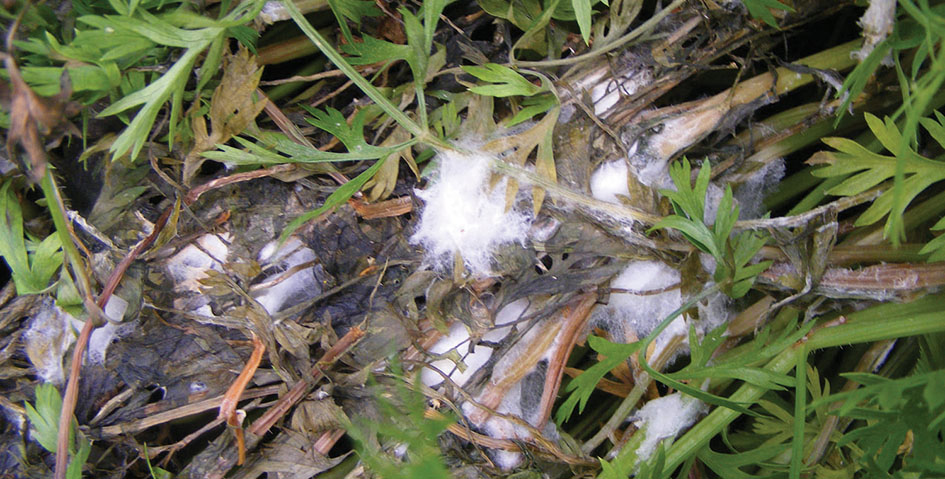Sclerotinia is a widespread and serious disease of carrots, affecting both yield and quality. However, growers have the option of integrating cultural and chemical control methods to get on top of the problem.
The ICM starts with a pioneering cultural technique using a specially designed three-bed carrot clipping machine that has been developed by Howard Hinds of Root Crop Consultancy together with Wroot Water. “The WrootClip Master 3 is a three bed clipping system which is now being more widely used in the UK. Trials results for one more year add to the other years but confirm that clipping consistently reduces Sclerotinia control later in the season,” says Howard.
“The canopy clipping technique involves clipping foliage between the rows when foliage starts to fall over, as Nairobi tends to do, and before disease is evident. Clipping the foliage allows more air movement within the canopy and as a direct consequence disease pressure is reduced.”
There are several clipping units working in the UK, covering Yorkshire, Shropshire, Lincolnshire, Nottinghamshire and Norfolk according to Howard. “The three-bed clipper follows drilling patterns and has a speed of operation of up to 15 km/hour; meaning between 200-300 acres can be clipped per day. The service is available via specialist contractors and more commercial areas are being clipped each year. The technique has no adverse effect on yield,” he says.
“We have had over seven years field experience with this cultural technique now and it clearly reduces the Sclerotinia infection by an average of around 60%, even with a full fungicide programme. The use of an effective chemical such as Signum applied at the correct time can then be integrated into the control programme, with timing and risk being assessed by the BASF/ADAS carrot monitoring system, which starts at the beginning of June.”
The ADAS/BASF Sclerotinia Monitoring Service, monitors patterns of sclerotial germination each week for ten weeks from June through to August. “Depots of carrot sclerotia are monitored at 2 carrot growing sites, one in Nottinghamshire and the other in Cambridgeshire, as well as in some cereal crops.
“The Cambridge carrot crop in which sclerotia germination is monitored has only just been drilled in fact. So we are at least 2 to 3 weeks later than normal this year. Early drilled carrot crops are also a little behind, but no more than one week,” says Howard.
Growers can log on weekly at www.agriCentre.basf.co.uk to see the extent of germination activity.














